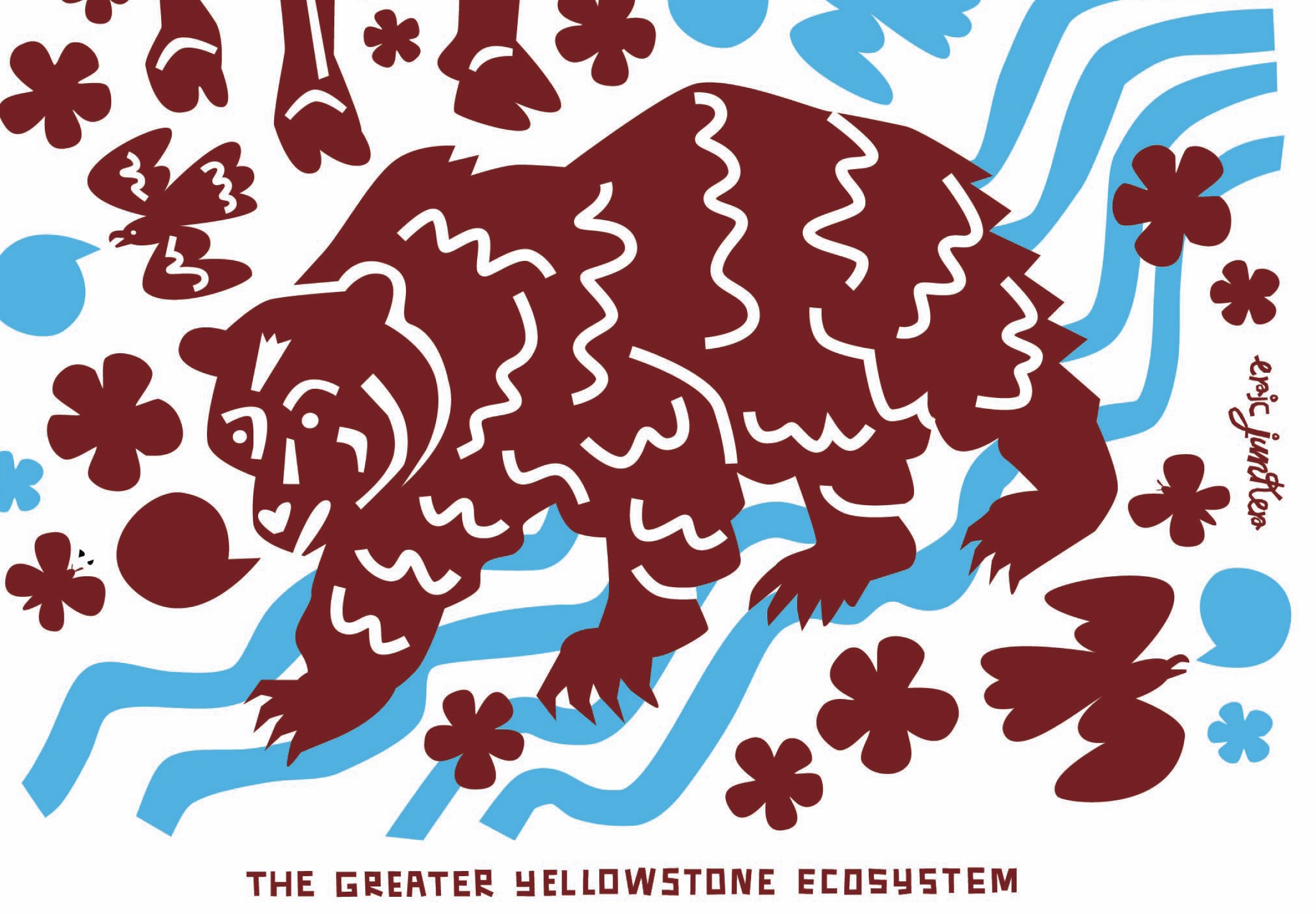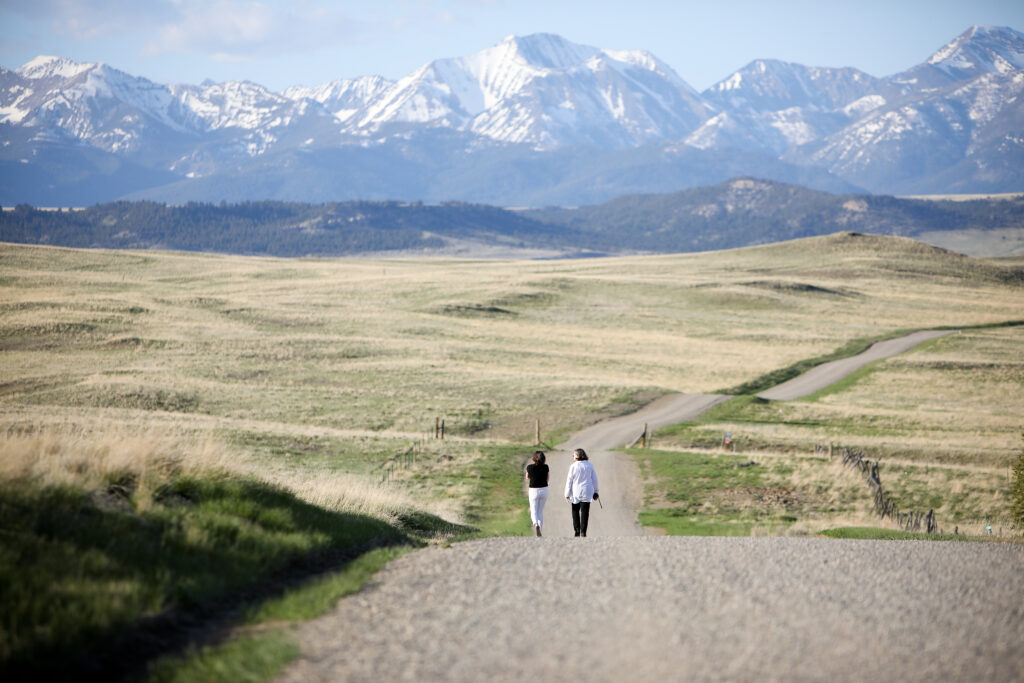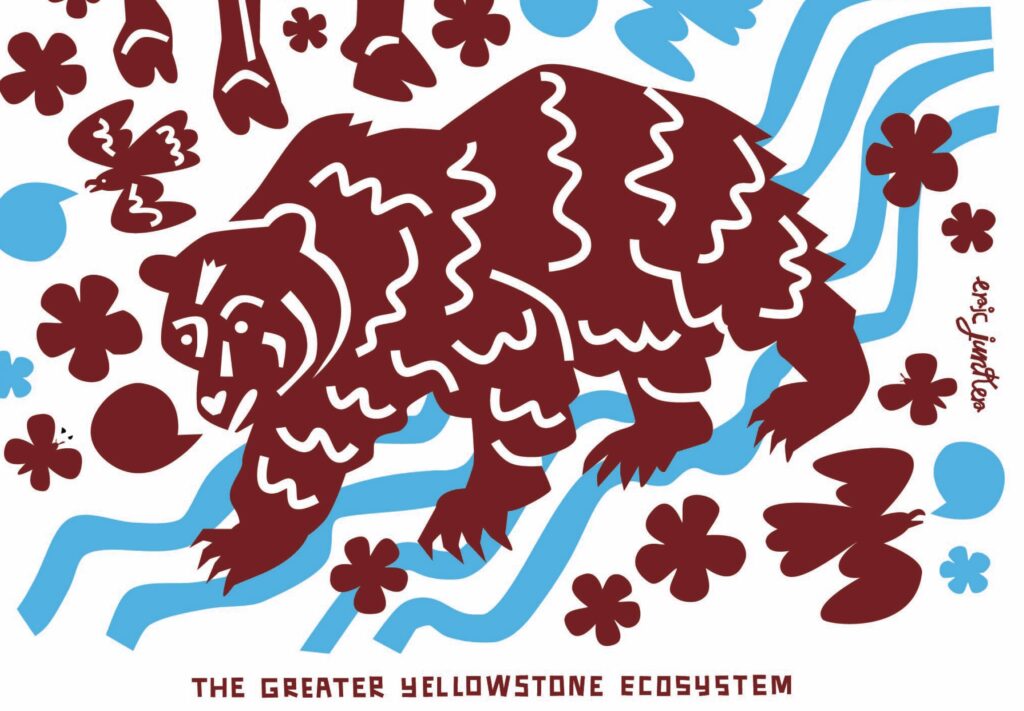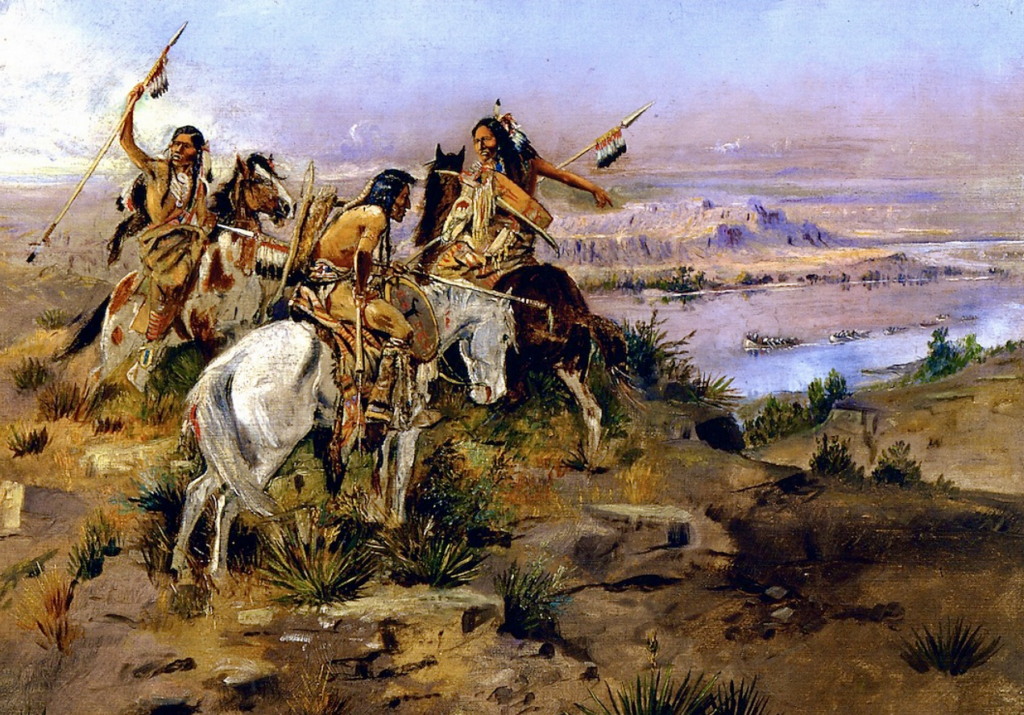by Todd Wilkinson
Lori Ryker sees power in connecting dots, thinking ahead rather than being behind the curve, rallying around big, bold ambitious notions instead of constantly reacting defensively due to intransigence and lack of vision. She tries to imagine what’s possible with saving a wild region like Greater Yellowstone and not lamenting its incremental loss after the fact because enthusiasm was lacking.
Ryker subscribes to the adage that when we fully awaken to our affection for the natural world, or what E.O. Wilson and others have referenced as “biophilia,” it is what ultimately compels people to come together as advocates. Art, she says, can be a unifying catalyst.
Wildlifes, a special art engagement initiative Ryker founded, seeks to, ultimately, make contact with millions of people, helping to open their eyes to how extraordinary the assemblage of wildlife in Greater Yellowstone is.
Even if people don’t live in Greater Yellowstone, and may never reach it in their lifetime, Ryker wants those dwelling in faraway urban areas to realize their voices matter in determining the fate of species, that they can become empowered in helping to safeguard this ecosystem’s amazing trove of biodiversity.
Ryker’s concern extends to all species, large and small, iconic and lesser known. However, she knows that the three charismatic megafauna which command universal attention from people who have never been to Yellowstone or Grand Teton are grizzlies, wolves and bison. She wants them to have close-range encounters, and even be able to take selfies, yet do it in a way that never puts them in danger of ending up on the highlight reels of the Yellowstone National Park: Invasion of The Idiots™! Facebook page. How?

Obviously, not in the presence of live animals. Wildlifes does it by presenting the three animal emblems of Greater Yellowstone’s wildness as tasteful public street art—as well as posters featuring the words “Greater Yellowstone Ecosystem” people can put on their walls. Doing so will even advance the conservation journalism capabilities of Yellowstonian.
From now through the end of July, Livingston-based Artemis Institute, the parent non profit entity of both Yellowstonian and Wildlifes, is participating in the Park County, Montana Community Foundation’s Give a Hoot fundraiser. All contributions made to Artemis Institute will support Yellowstonian‘s mission of providing conservation journalism focused on Greater Yellowstone. We would be profoundly grateful for your support and here’s your chance to get a really cool visual reward for your generosity: Anyone who contributes $35 or more will receive their pick of one individual species poster (see below) or all three for $100. For a donation of $350 or more, supporters will receive a special, limited-edition collector’s lithograph that features all three of Greater Yellowstone’s big three iconic species. It is hand-signed by Eric Junker.
Ryker wants them to have close-range encounters with grizzlies, wolves and bison, and even be able to take selfies, yet do it in a way that never puts them in danger of ending up on the highlight reels of the Yellowstone National Park: Invasion of the Idiots! Facebook page. How?
Just as Thomas Moran’s portrayals of the Grand Canyon of the Yellowstone in the early 1870s inspired Congress to set aside lands that formed America’s first national park, art can have its own impact in the 21st century, she says. In urban environments and, more commonly in Yellowstone gateway towns, outdoor murals are part of the backdrop. Contemporary street art, speaking a visual language that resonates with young people, can become an entry point for education.
“Talking to ourselves will not save the GYE,” Ryker told writer Vaia Errett who penned a profile on Wildlifes for Outside Bozeman magazine in spring 2024. “We’re too small an audience.”
Ryker also is founder of the non-profit Artemis Institute, a 501 (c) (3) organization that hatched Yellowstonian as a special project in April 2024. Assembled together, Ryker believes that visual art, uplifting place-based thinking and compelling storytelling can inspire people to see Greater Yellowstone in a new way. Yellowstonian, though only a few weeks out of the gate, “is proving that you can have a passionate base of nature-loving readers in the region and you can highlight the value of wildlife conservation here in a way that ripples around the world.”
Ryker remembers well how, in the 1970s, t-shirts sold in the region around Glacier National Park with the slogan, “Go Hike a Glacier” became a national sensation, giving that spectacular nature preserve located in northern Montana along the border with Canada cultural mystique. With the kind of imagery below she wants to do the same for Greater Yellowstone.
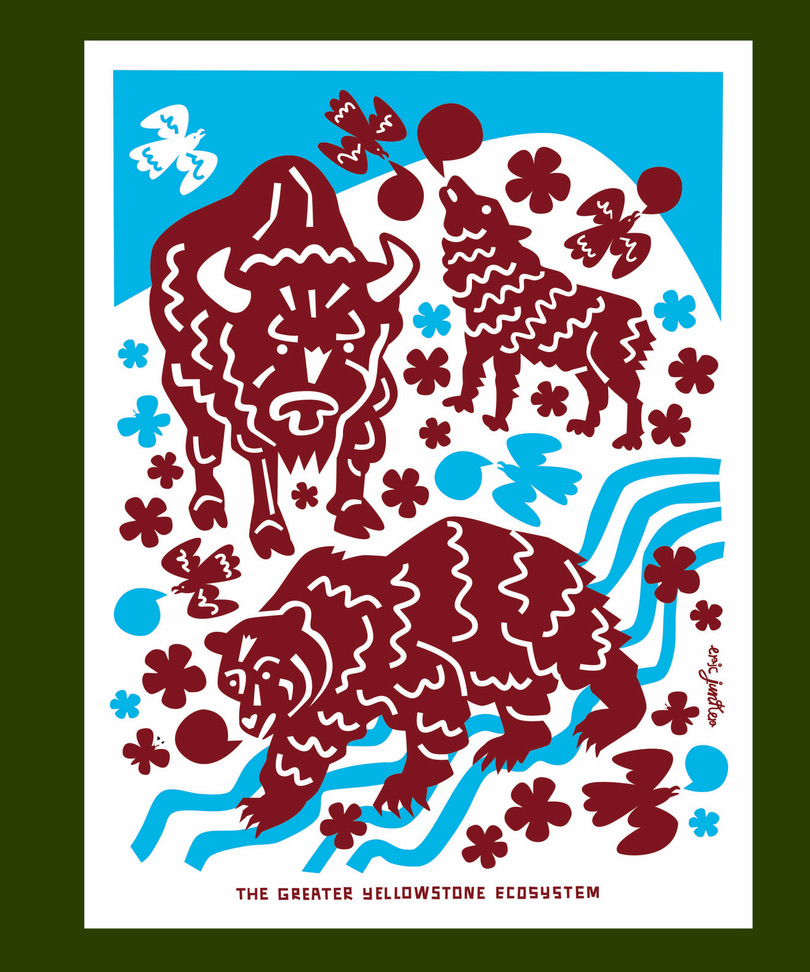

Along with the fun artwork created by visiting artist Eric Junker, Ryker is encouraging citizens to flaunt their support for Greater Yellowstone by putting ovular “GYE” bumper stickers on their vehicles.
By design, the stickers resemble popular stickers motorists have proudly displayed for decades touting their country of origin. Artemis/Wildlifes/Yellowstonian is making four “GYE” and Wildlifes stickers available free to anyone who reaches out. (Drop us an email at contact@wildlifes.org and a packet will be put in the mail).
“In the same way that we in Greater Yellowstone don’t live on a coast or have daily access to whales, orcas and dolphins, and though we live far away from the African Serengeti with its elephants, lions and rhinos, we still care about the survival of those animals,” Ryker says. “We need to mobilize more people who can advocate for Greater Yellowstone’s wildlife, that is, if we want there to be any hope of holding onto biodiversity in the face of so many converges challenges. Art can bring a daily presence of these animals into peoples’ lives and serve as a reminder of why this region is very different. It really is a national natural treasure and we need to think of it that way.”
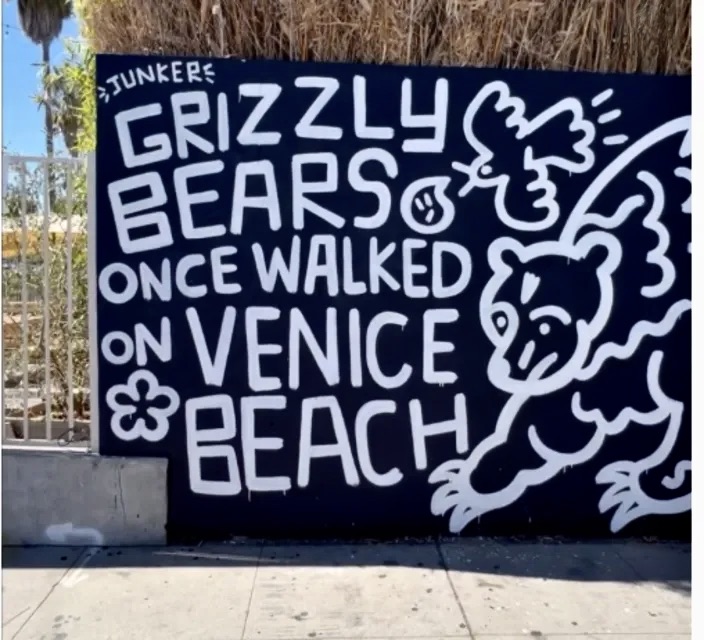
Ryker, an architectural designer who has a PhD, is also a painter and non-profit innovator. She launched Wildlifes in Livingston, Montana in 2022. To make a splash she enlisted LA-based Junker, known for creating contemporary animal and nature-based motifs that read like a combo of engaging modern hieroglyphs, pictographic symbols and stylized graffiti that resonates with younger eyes. He estimates that millions of people have encountered his creations with their eyes. Among Junker’s clients: the clothing company Patagonia.
Ryker says younger generations sometimes view traditional wildlife art as being démodé. Wildlifes is intended to be art made for our time, that can reach far larger masses of people than a single painting on a wall in a museum; art that subtly promote a unifying conservation ethic. “Some really cool expressions of that,” Ryker says, is a series of Greater Yellowstone Ecosystem posters, created by Junker, that readers of Yellowstonian can proudly put on their walls. There are three posters that each feature a grizzly, lobo or buffalo and a special limited edition, signed by Junker, with all three species.
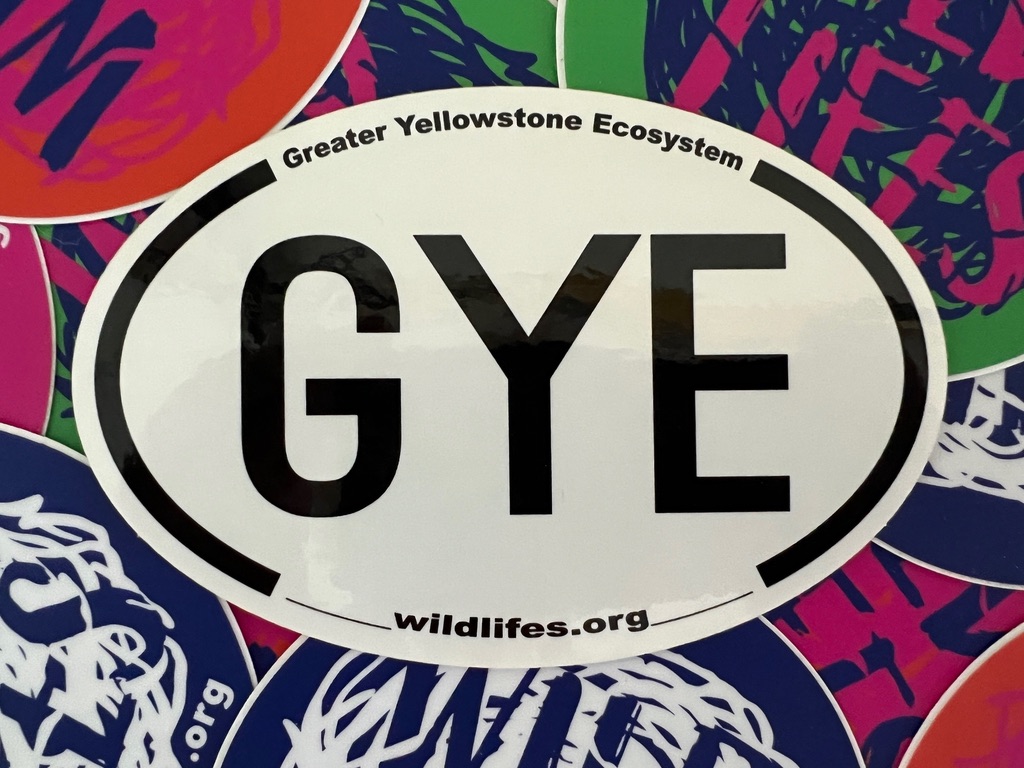
“We don’t have a big operational budget. Our success really depends on whether people believe that conservation of Greater Yellowstone’s wildlife and its wildlands matters,” Ryker says. “We believe that it does. We hope that belief is shared. In the case of Yellowstonian, it already has an enthusiastic audience of readers from across the country. They’ve told us they like the stories because it provides perspective, they can’t find anywhere else.”
As the first artist in residence of Wildlifes, Junker in 2022 unveiled a brief flourish of pop-up imagery centered around that triumvirate of Greater Yellowstone creatures, which each has an avid group of followers. Together, Junker and Ryker also are open to entertaining offers from businesses (in the region and beyond) that have exterior wall space available for murals that will not only grab attention but remind passersby that those establishments celebrate the ecosystem’s wild essence.
“Coming here has been a revelation to me. I thought I got what Greater Yellowstone was about, but I didn’t until I saw how important wildlife is, and it opened my eyes,” Junker said at a public gathering in Paradise Valley. “I realize now that conservation without making wildlife conservation a priority in a region like this isn’t really conservation at all.”
“Coming here has been a revelation to me. I thought I got what Greater Yellowstone was about, but I didn’t, until I saw how important wildlife is, and it opened my eyes. I realize now that conservation without making wildlife conservation a priority in a region like this isn’t really conservation at all.”
—Renowned artist Eric Junker who created the Wildlifes’ motifs
Witnessing himself how people have life-changing experiences by coming to Greater Yellowstone to view wildlife, Junker wants “Yellowstonephilia” (a love for the Yellowstone region) to infect and inspire people to care more about nature here and in their own backyard.
While Ryker is a resident of Park County today, she has lived in both Bozeman and Jackson Hole, completing community projects in each location. “We are in danger of losing so much in Greater Yellowstone to development pressure, overtourism and climate change,” she says. “These animals remind us that we need to consciously make more safer spaces available for them on the land and to do that it means first opening up space in our hearts.”
“We are in danger of losing so much in Greater Yellowstone to development pressure, overtourism and climate change These animals remind us that we need to consciously make more safer spaces available for them on the land and to do that it means first opening up space in our hearts.”
—Lori Ryker, founder of Wildlifes and Artemis Institute, non-profit home to Yellowstonian
Art can be a catalyst for helping Americans, young and old, realize they can experience a sense of connection to the Yellowstone ecosystem in their own community, she notes. “It’s my hope that it will also spark feelings of discovery and advocacy they carry forward with them.
Readers can find Wildlifes, Yellowstonian and Artemis Institute, each with its own presence on Facebook and Instagram. They can also sign up for the new Yellowstonian newsletter by clicking here.
More About Junker and Ryker
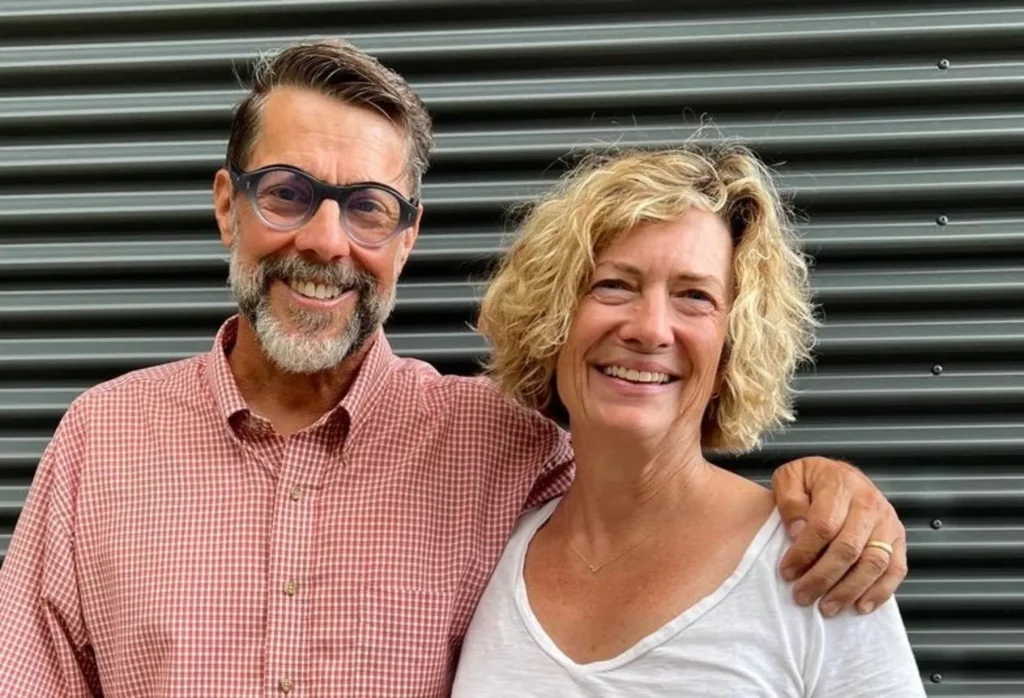
Ryker has devoted her career to bringing about change that goes beyond mere conventional thinking. A graduate of the Harvard Graduate School of Design, she has worked professionally as an environmental-friendly building designer, college educator of architecture students, and is herself a nature artist. She operates her own design firm in Livingston, studioryker.
Ryker sees Wildlifes and Yellowstonian as an extension of ecological education championed by Artemis Institute. For more than a decade, Artemis Institute offered an immersive study program—Remote Studio— to college-aged architecture students from across the country and abroad. Its mission was getting participants to reflect on how architecture—the built human environment— can be more ecologically compatible with preserving wildlands and pastoral landscapes.
A protegee of the noted place-based architect Samuel Mockbee, Ryker is author of a monograph, Mockbee Coker: Thought and Process about Mockbee and his creative partner, Coleman Coker. Together, they pioneered place-based thinking in the South. She also wrote two books about how to approach living off the grid.
Ryker enlisted Junker based on his ability to translate inspirations from wild places into a visual language that speaks to the different sensibilities of urban human denizens. “Art is a way in, but then you combine with helping to heighten ecological understanding and you’ve innovated a powerful path forward—not toward consumption of place, but a much wiser approach to safekeeping and true stewardship.”
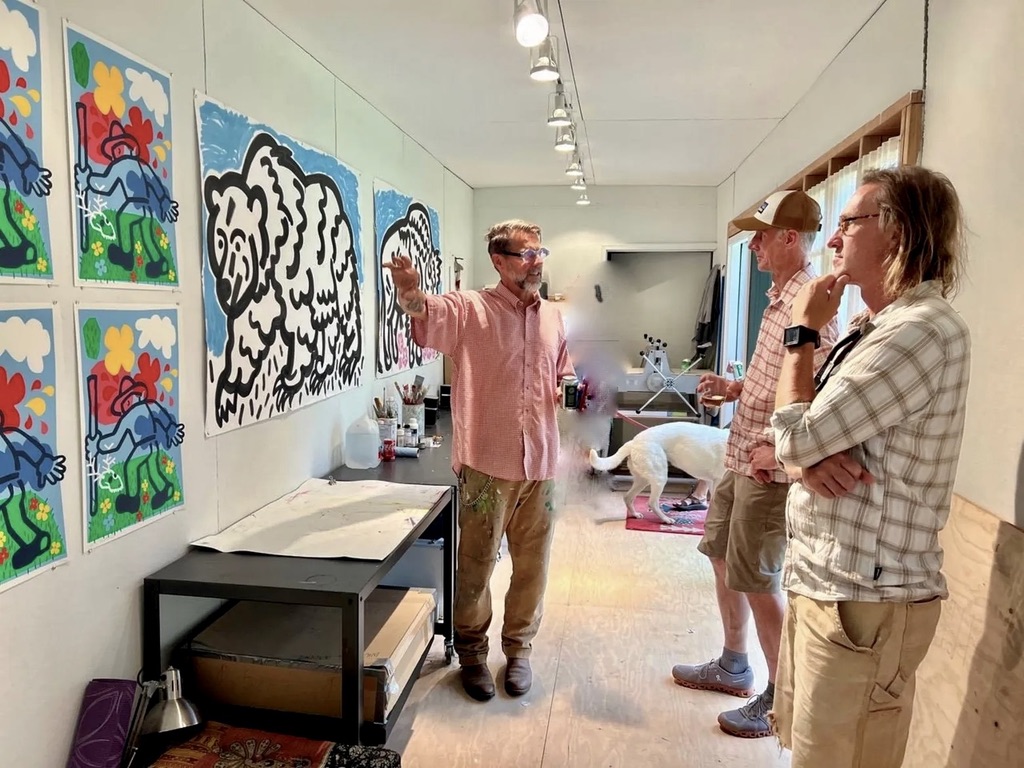
Many readers here might have encountered his art before. His “psychedelic nature-pop murals” can be found throughout Southern California and in New Mexico, Texas, Louisiana, Baja Mexico, Costa Rica and New York City. His talent has also earned him a client roster that includes Oculus, Louis Vuitton, Patagonia, Coach, Target and the Los Angeles Philharmonic. His work has been referenced on CBS This Morning, The New York Times, The Los Angeles Times and other publications. He’s also a lecturer at the University of Southern California’s Roski School of Art and Design.
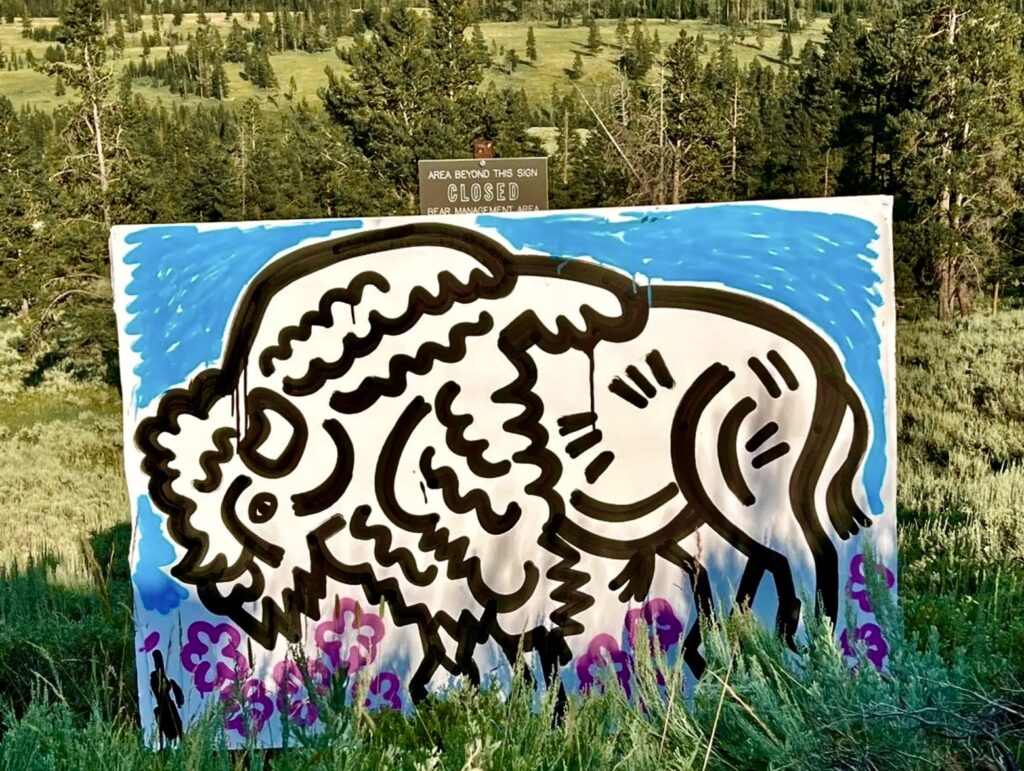
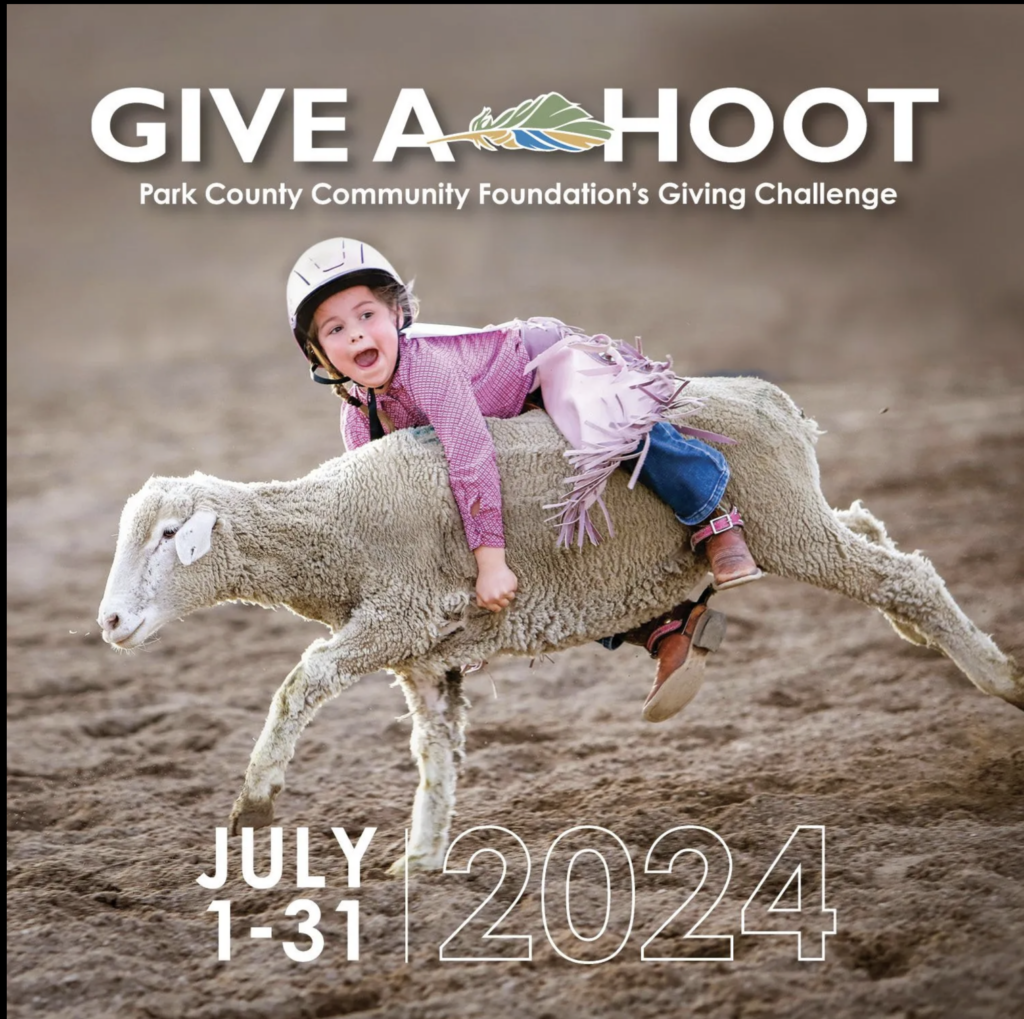
To learn more about the Park County Community Foundation’s Give-a-Hoot campaign and all of the great non-profits, click here!

